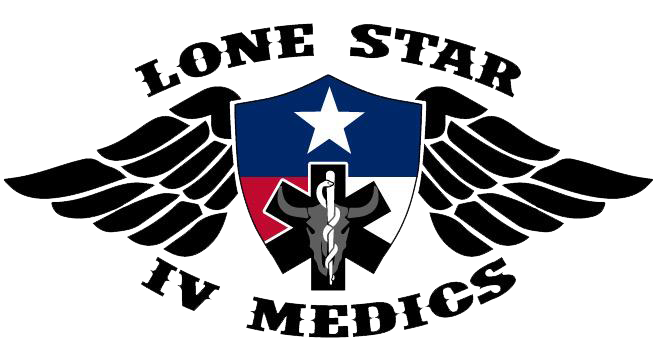
2025 has been marked by price transparency buzz in the form of a number of legislative updates. In February, President Trump signed an executive order that indicated Washington was dedicated to moving price transparency to a new phase of accuracy and utility. In response, on May 22nd, several federal government entities published a handful of updates to the current price transparency final rules, including one new piece of guidance, one new FAQ doc, and two requests for information (RFIs). And most recently, on July 15th, CMS issued a proposed rule that included a section on hospital price transparency requirements. Common themes emerged among the updates and RFIs:
- Machine-readable file (MRF) accuracy and completeness is crucial
- People want to know actual prices of healthcare and not just what the payer/provider contract dictates a rate to be
- Prescription drugs are a necessary, yet currently absent, element of price transparency
Innovators in the price transparency landscape responded to both RFIs and worked with providers to ensure their MRFs meet the new guidance standards. And yet, despite all the noise around the updates, there’s one area that’s been conspicuously absent this year: enforcement of patient estimate requirements. Estimates are a part of both final rules in the form of requirements for Patient Estimate Tools (PETs). They’re also a major part of The No Surprises Act (NSA), which governs a number of elements of the patient healthcare financial transaction, including requirements around Good Faith Estimates (GFEs) for uninsured or cash pay patients and Advanced Explanation of Benefits (AEOBs) for insured patients.
Why should it matter that PETs and the NSA were not included in this summer’s wave of updates? Because by nature, MRFs are exactly as stated: machine-readable. Patients, on the other hand, justifiably benefit from a solution that is human-readable. The burden of creating a shoppable healthcare experience should not fall to patients, who cannot reasonably be expected to bundle rates on their own. Instead, that burden should be on innovators, health plans, and providers creating solutions within the already existing NSA and PET frameworks. Transparency in Coverage, the final rule that dictates health plan MRFs, specifically noted that one of the main reasons to post rates was to open the door for subject matter experts to transform MRFs into “products, research, and market oversight and reforms that will ultimately benefit consumers.”
For example, have you ever received numerous bills for a single episode of care? Perhaps individual bills for institutional, professional, and technical components of services rendered? If you were to dig into MRFs, those individual components are often appropriately and compliantly reported. Despite that, it’s unreasonable to expect patients to ascertain how many bills they’ll receive for one service even when rates within MRFs are compliant. Comprehensive, bundled estimates greatly increase the broader audience’s ability to use hospital pricing effectively.
If you’re thinking that all of this makes for a compelling argument and you hop on your computer to find your provider’s PET, you may not actually find one. Or perhaps you’ll find one and enter an experience so rudimentary that you wonder if Pong is included. That experience likely ends with a message telling you to call the provider to get the information you’re looking for. Or perhaps you’ll get a price range that’s so wildly variable you’re not sure if you’re getting a price for a basic metabolic panel or a double lung transplant.
Or maybe you’re asking yourself why you didn’t see an AEOB or GFE at your most recent doctor’s visit…or more basically, why you’ve never even heard either of these acronyms. The answer ties back to our age old refrain: lack of enforcement. As of today, AEOB enforcement has been delayed indefinitely. Enforcement on GFEs that must include more than one providers’ worth of charges (think an anesthesiologist and a surgeon) has also been delayed.
As this years-long delay lingers, any industry motivation to proactively create a scalable solution wanes. Known complexities exist surrounding data interoperability and the difficulties needed to overcome siloed EHRs, practice management systems, and patient eligibility checks. The solution requires innovators, payers, and providers to commit to a new world that includes APIs for quicker data exchange and proactively educating patients on how and when to request estimates.
In light of these complexities, it’s a safe bet to say that AEOBs and GFEs will be possible first and foremost when enforcement dates are assigned. The proposed rule at least acknowledges this end goal, saying, “we believe this information provides context to the public that is necessary to compare payer-specific negotiated charges across hospitals and is a valuable benchmark that innovators can use to develop price estimator tools to estimate an individual’s personalized out-of-pocket costs.” But again – that’s in reference specifically to MRF generation, and the proposed rule stops short of focusing on new and improved requirements on PETs.
The lack of enforcement dates has translated into a lack of incumbent resources available to invest in compliant solutions and innovators who struggle to realize any return on their investments in solutions. We’ve seen this in the price transparency space before: prior to the 2024 Final Rule, hospitals were given optional schemas to utilize when they built their MRFs. However, it was not until the schemas transitioned from optional to required, with an enforcement date of 7/1/24, that we saw updated files.
The upside in the increased focus on price transparency this year is that the concept of a transparent healthcare financial transaction remains top of mind across the board. We do need complete, accurate, and updated MRFs. We unequivocally need publicly-available prescription drug pricing data. All of the updates this year point to a general understanding that files can and should be improved. And yet, the rate data within MRFs can become exponentially more powerful once that data is meaningfully bundled and applied to estimate tools designed in plain language for patients.
Later this year, we anticipate new requirements or additional guidance on the heels of the RFIs submitted this summer. Whatever’s coming down the pike must include a wider scope than just MRFs if we want patients to confidently enter the price transparency conversation. In addition to the stakeholders creating and posting prices, bundled patient pricing can and should be the ultimate goal so we can overcome the common refrain that’s followed the files around for years:
“What do these rates tell me about how much my appointment will cost?”
Photo: Oleksandr Hruts, Getty Images
Carol Skenes has spent over a decade working in healthcare, primarily focusing on payment review and denials management, revenue integrity, CDM optimization, EHR automation, and price transparency. In her role as Principal Strategist at Turquoise Health, Carol is the subject matter expert on all price transparency Final Rules, laws, and legislation. She also leads strategic initiatives focused on areas where price transparency data can minimize administrative complexity within the revenue cycle.
This post appears through the MedCity Influencers program. Anyone can publish their perspective on business and innovation in healthcare on MedCity News through MedCity Influencers. Click here to find out how.











